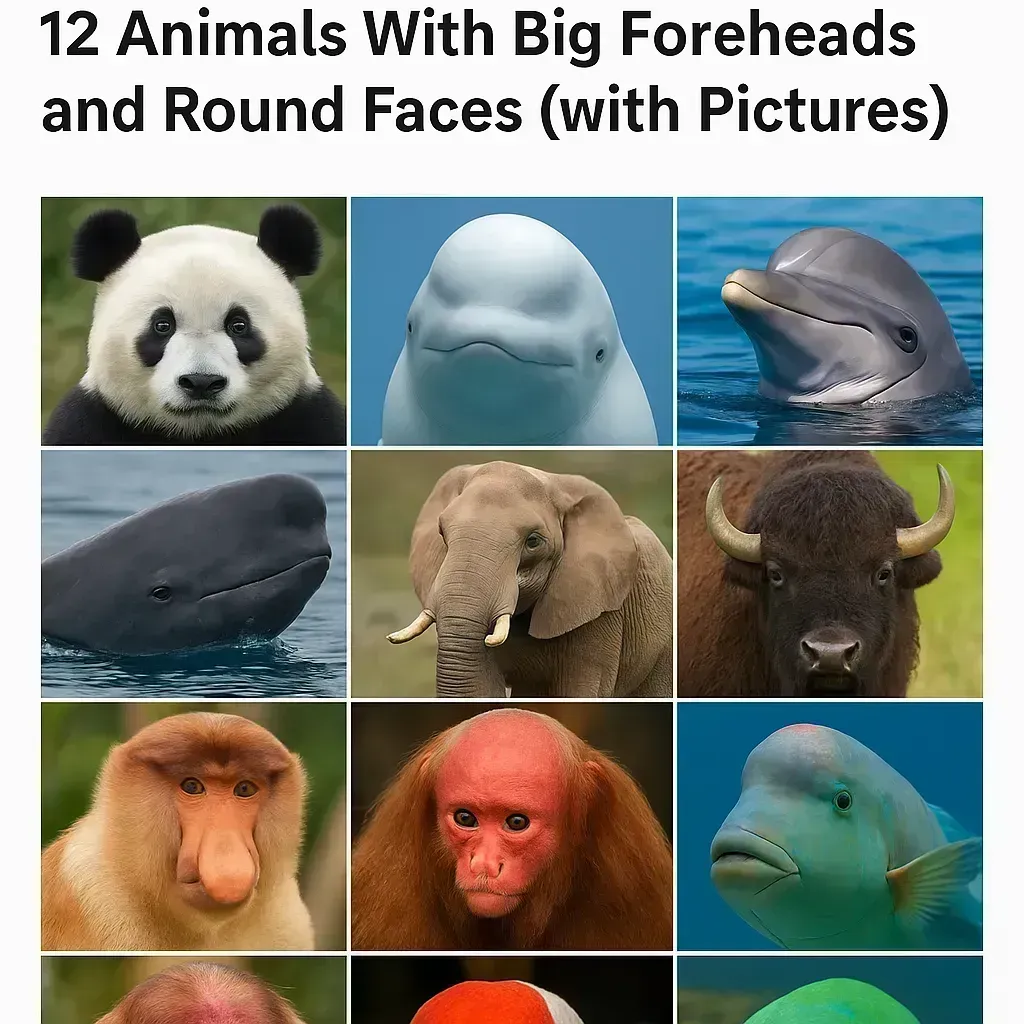Table of Contents
Animals with big foreheads and round faces capture our hearts with their adorable features. These unique facial characteristics aren’t just about cuteness – they serve important biological functions.
From powerful jaw muscles to specialized echolocation organs, nature has fascinating reasons behind these distinctive looks.
Let’s explore 12 remarkable creatures that showcase how evolution shapes form to meet function in the animal kingdom.
Why Do Some Animals Have Large Foreheads?
Big foreheads in animals often indicate specialized adaptations. Large skull structures can house powerful jaw muscles, store fat reserves, or contain unique organs. Round faces frequently signal strong chewing capabilities or social communication features.
Marine mammals develop fatty organs called melons for echolocation. Land animals may evolve prominent foreheads for muscle attachment or temperature regulation.
Understanding these adaptations helps us appreciate nature’s incredible design solutions.
12 Types of Animal Names With Big Foreheads and Round Faces
Here are the 12 Types of animals with foreheads and round faces, names with images,
Marine Animals:
- Beluga Whale
- Bottlenose Dolphin
- Sperm Whale
- Green Humphead Parrotfish
Land Mammals:
- Giant Panda
- Gorilla
- Elephant
- Wild Yak
- American Bison
Primates:
- Proboscis Monkey
- Bald Uakari
Aquatic Pet:
- Oranda Goldfish
Giant Panda – The Bamboo-Crushing Gentle Giant

Giant pandas top our list of animals with distinctive facial features. Their round faces and prominent foreheads aren’t just adorable – they’re perfectly designed for their bamboo diet.
Pandas possess powerful jaw muscles that anchor to their wide skulls. This muscular structure allows them to crush tough bamboo stalks efficiently. Their large foreheads provide the necessary space for these massive chewing muscles.
Fat storage in their cheeks helps pandas survive cold mountain climates. Their baby-like faces also make them irresistible to humans, supporting conservation efforts worldwide.
Pandas use facial expressions for communication too. Raised eyebrows and flared nostrils convey excitement or aggression to other pandas.
Gorilla – Nature’s Powerful Primate
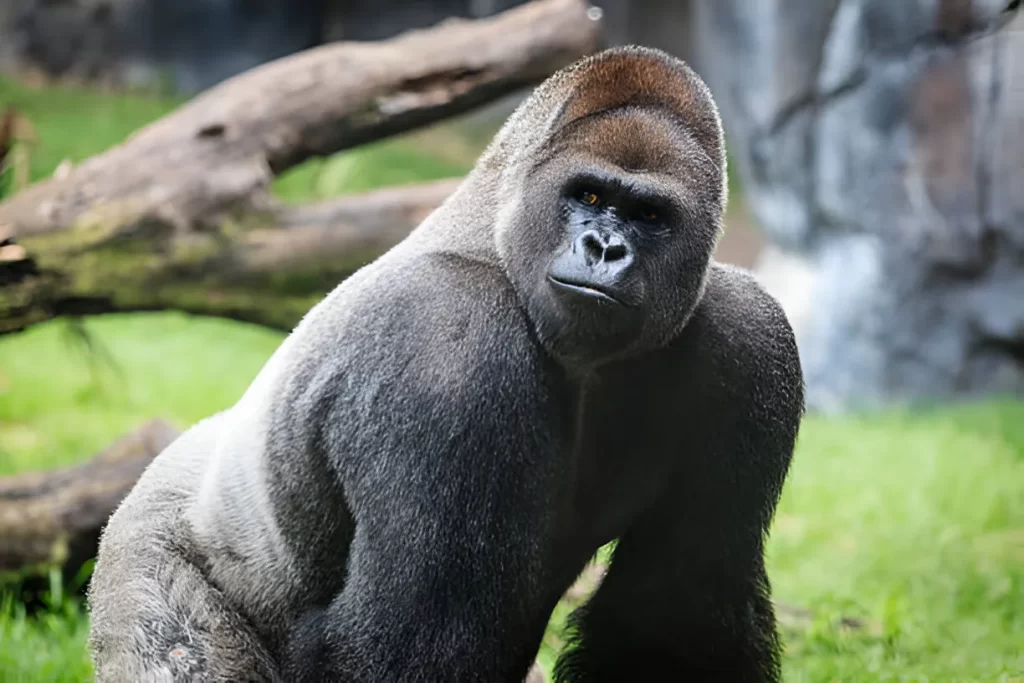
Gorillas showcase impressive forehead development, especially male silverbacks. Their prominent sagittal crest creates that distinctive bulky forehead appearance.
This bony ridge serves as an attachment point for massive jaw muscles. Gorillas need powerful jaws to process tough plant materials like bark, stems, and roots.
Male gorillas develop larger skulls as they mature. This growth helps establish dominance and attracts potential mates within their social groups.
Their round faces enable complex emotional expressions. Gorillas communicate anger, curiosity, and affection through subtle facial movements.
Beluga Whale – The Arctic’s Smiling Sea Angel
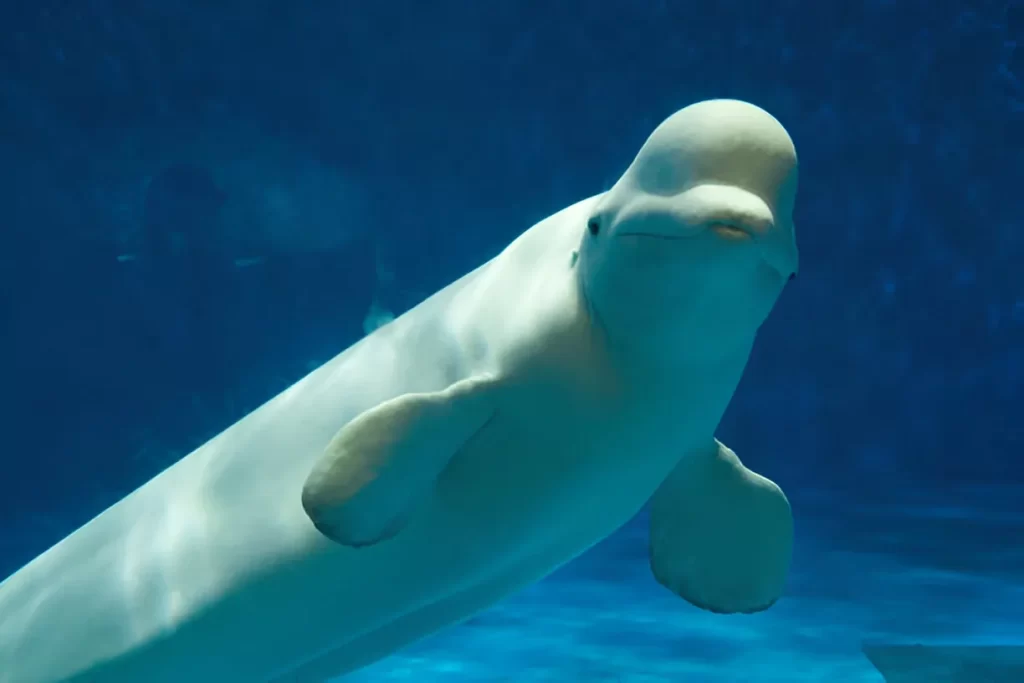
Beluga whales feature one of nature’s most recognizable big foreheads. Their rounded melon contains specialized fatty tissue for echolocation purposes.
This organic sonar system helps belugas navigate Arctic waters. They emit sound waves and interpret returning echoes to locate food and avoid obstacles.
Belugas can reshape their melons to fine-tune sound production. This flexibility makes them incredibly efficient underwater communicators.
Their expressive faces earn them the nickname “sea canaries.” Belugas produce whistles, clicks, and chirps for social interaction.
Bottlenose Dolphin – The Ocean’s Intelligent Beauty
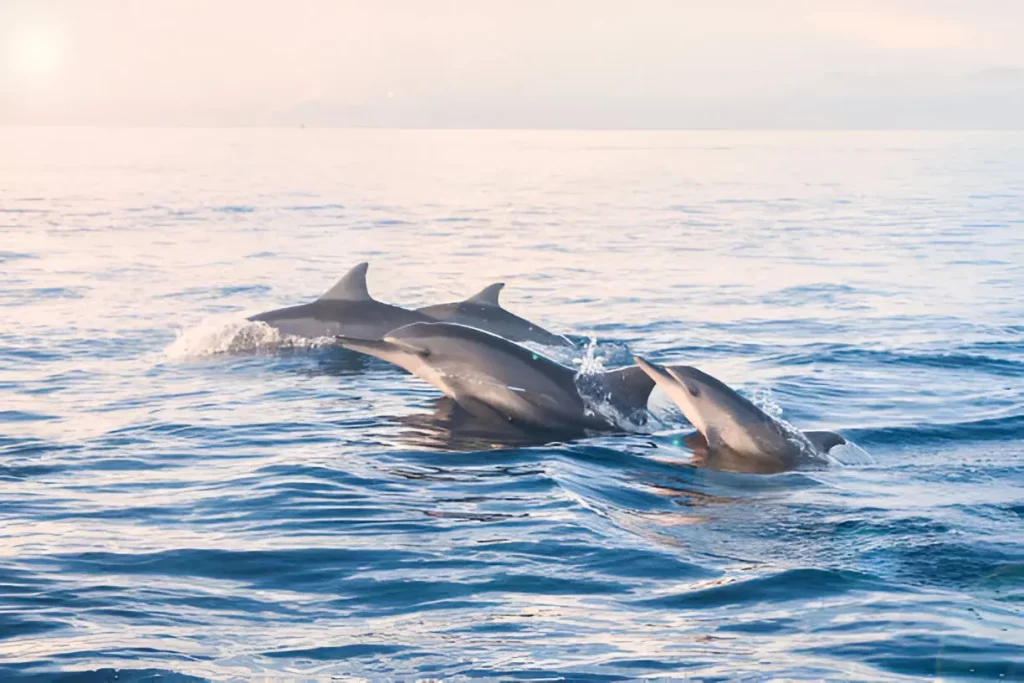
Bottlenose dolphins combine intelligence with distinctive facial features. Their melon-shaped foreheads house sophisticated echolocation equipment.
These marine mammals use biosonar to hunt in murky waters. Their fat-filled melons focus sound waves with remarkable precision.
Dolphins recognize each other through unique signature whistles. Their large foreheads help create and direct these personal identification calls.
Their naturally curved mouths create the illusion of constant smiling. This feature, combined with their round faces, makes dolphins universally beloved.
Sperm Whale – The Deep-Sea Giant
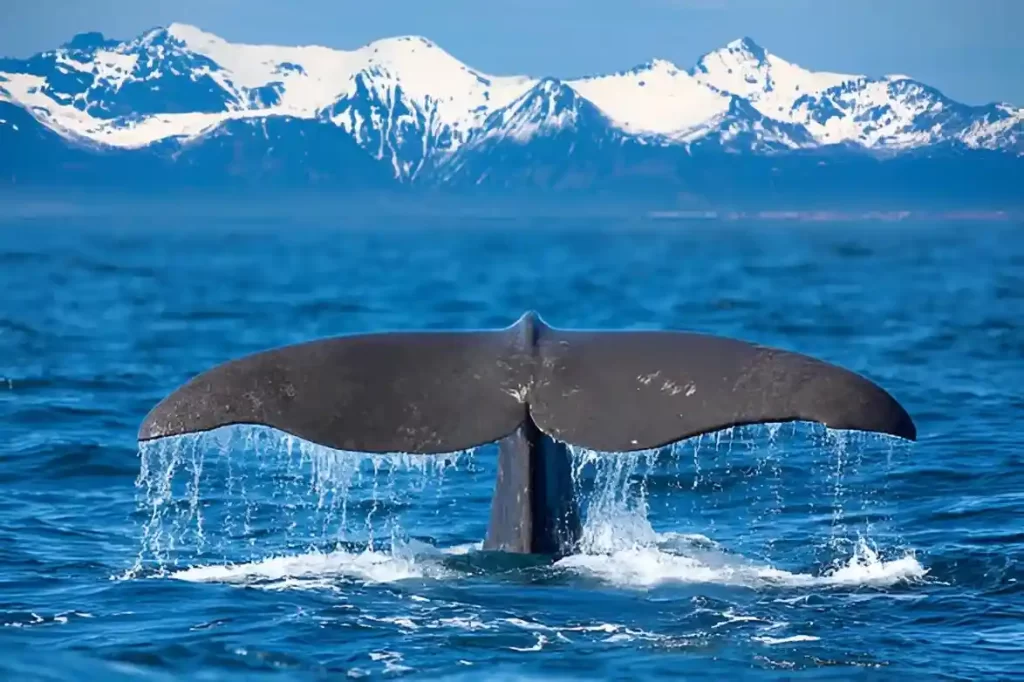
Sperm whales possess the largest heads in the animal kingdom. Their massive foreheads contain spermaceti, a waxy substance crucial for deep diving.
This specialized organ helps regulate buoyancy during extreme dives. Sperm whales can descend thousands of meters by controlling spermaceti temperature.
Their block-shaped heads amplify echolocation clicks. These sounds help locate squid prey in complete darkness.
The contrast between their enormous upper heads and narrow lower jaws creates a unique profile perfectly adapted for deep-sea hunting.
Elephant – The Majestic Land Giant
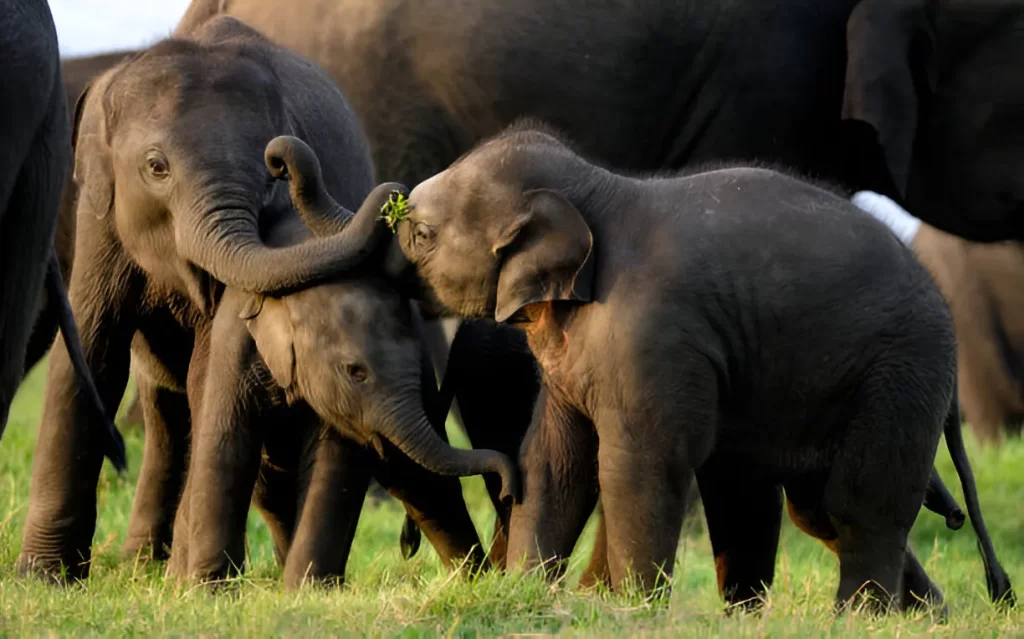
Elephants showcase nature’s most impressive land mammal foreheads. Their massive skulls support heavy trunks and powerful tusks.
Air-filled sinus cavities reduce head weight while maintaining structural strength. This engineering marvel balances size with functionality.
Elephants use their foreheads in dominance displays. Males raise their heads and spread their ears during confrontations.
Sensitive nerve endings in their forehead skin make this area highly tactile. Elephants feel touch sensations through their thick forehead skin.
Wild Yak – The Highland Survivor
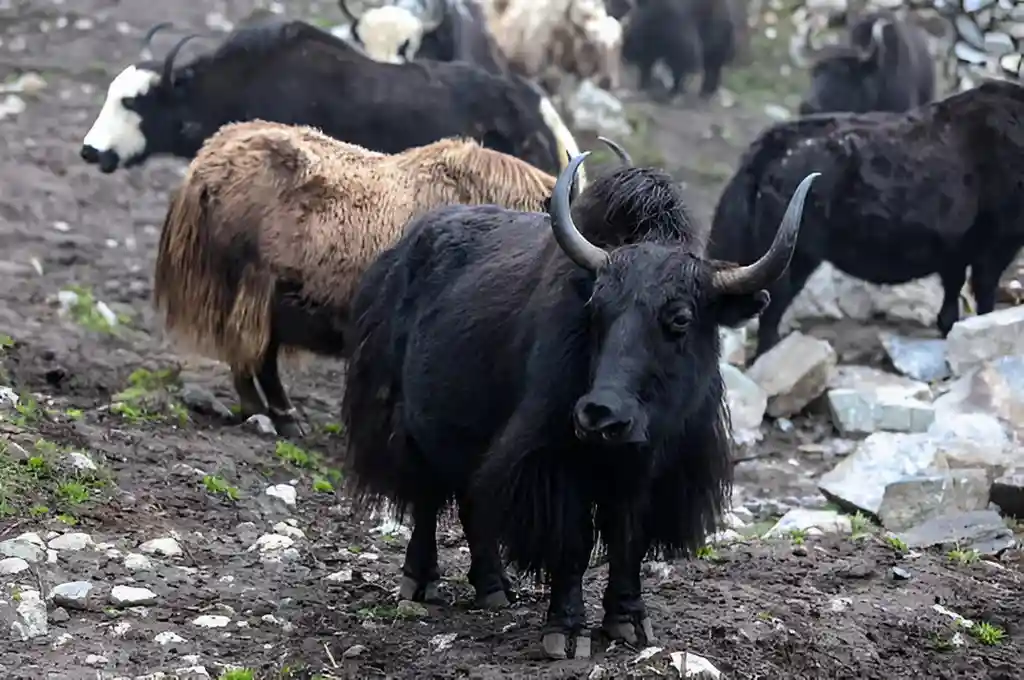
Wild yaks thrive in harsh Himalayan conditions with help from their distinctive foreheads. Dense fur covers their wide skulls for insulation.
These powerful animals use their heads as snow plows. Their flat foreheads push aside snow to uncover buried vegetation.
During mating season, males engage in head-butting contests. Their broad foreheads absorb impact during these dominance battles.
Fat and muscle storage in their round faces generates body heat. This adaptation helps them survive extreme cold temperatures.
American Bison – The Prairie Powerhouse
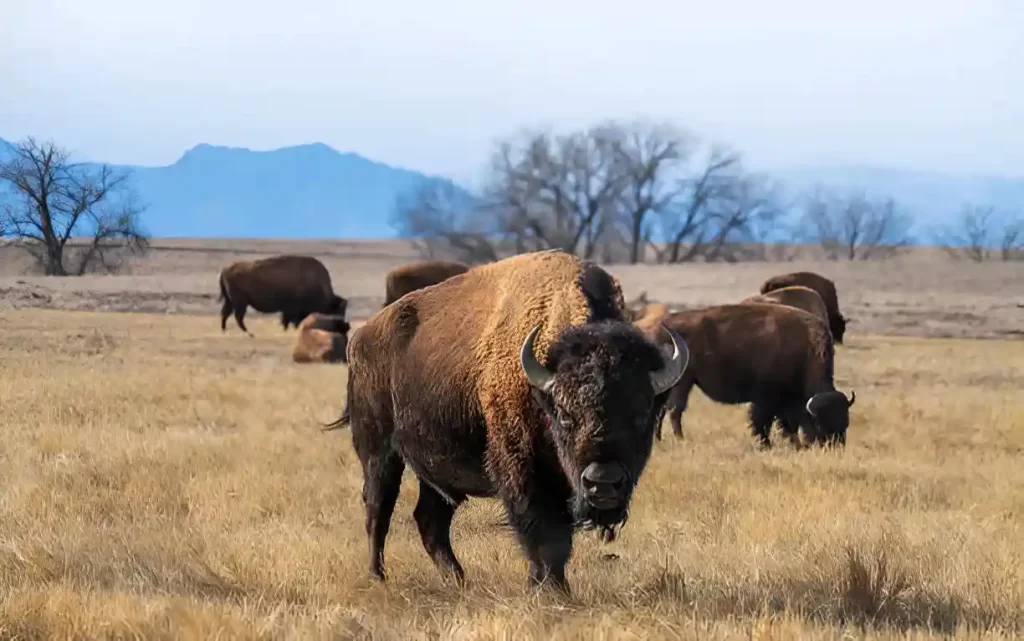
American bison feature impressive domed foreheads covered in thick fur. These structures support massive neck and shoulder muscles.
Bison swing their heads to clear snow during winter foraging. Their wide skulls act as natural snowplows.
Bulls use their padded foreheads for dominance fights. These head-butting contests determine mating rights and social hierarchy.
Their expressive round faces communicate through grunts, snorts, and nostril flaring. These signals warn of danger or show aggression.
Read also: Walmart Anti Money Laundering Questions
Proboscis Monkey – The Forest’s Unique Face
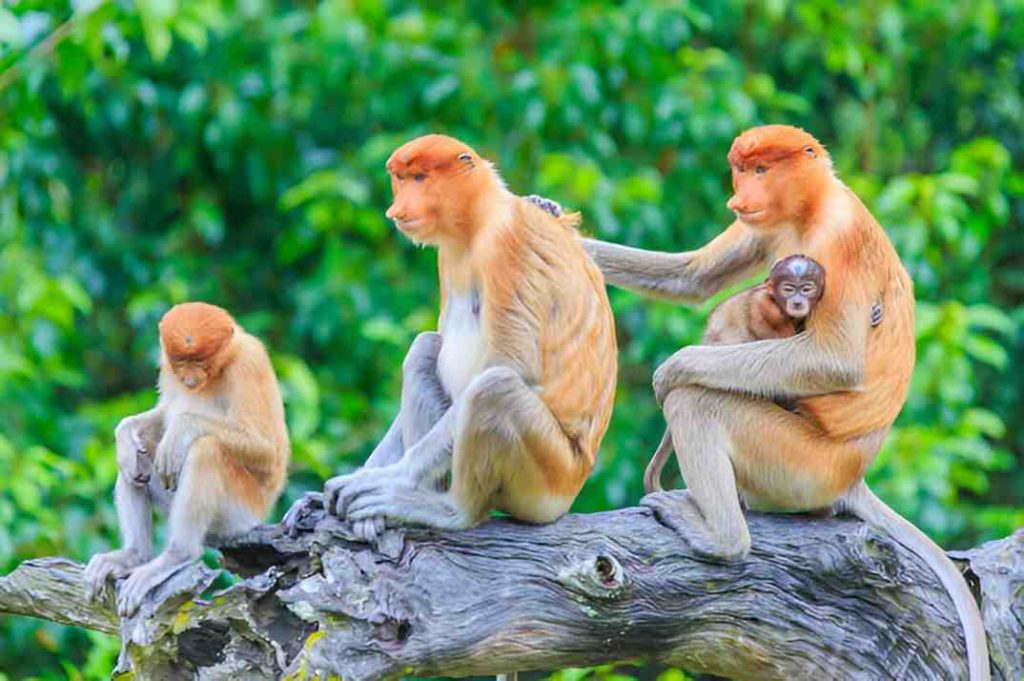
Proboscis monkeys combine prominent foreheads with extraordinary noses. Males develop the most dramatic facial features.
Their large skulls support elongated nasal structures. Bigger noses create louder calls that attract more females.
These monkeys use their comical faces for forest communication. Their vocalizations carry across dense rainforest canopies.
Despite their unusual appearance, proboscis monkeys are excellent swimmers. Their balanced heads help them dive and leap between trees.
Bald Uakari – The Red-Faced Rainforest Dweller
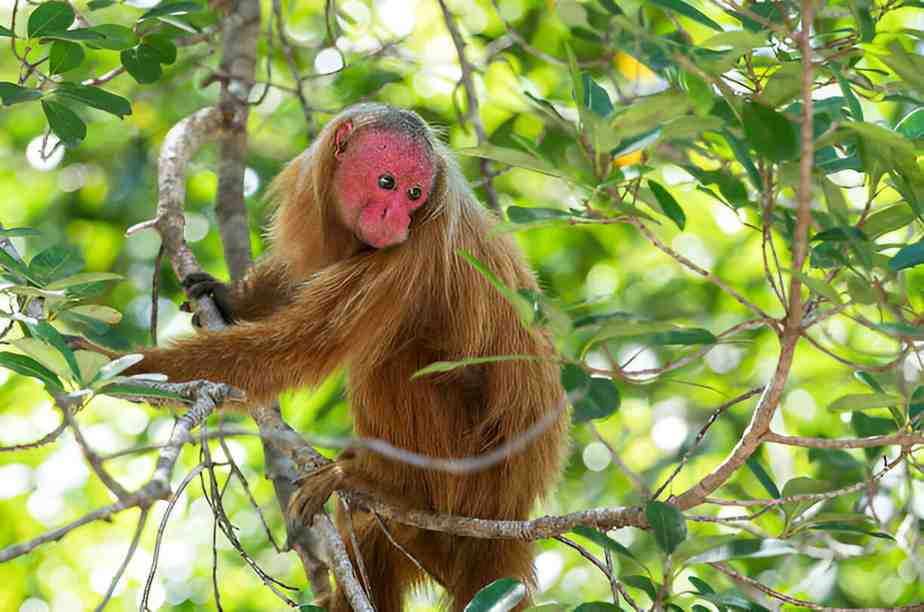
Bald uakaris sport bright red foreheads that signal health status. Vivid coloration indicates good blood circulation and disease resistance.
Their hairless heads help regulate temperature in humid rainforests. Heat escapes efficiently through exposed skin.
These highly social monkeys live in groups of up to 100 individuals. Their expressive faces facilitate complex group communication.
Round faces and human-like expressions make them easily recognizable. Their unique looks serve important survival functions.
Oranda Goldfish – The Aquatic Beauty
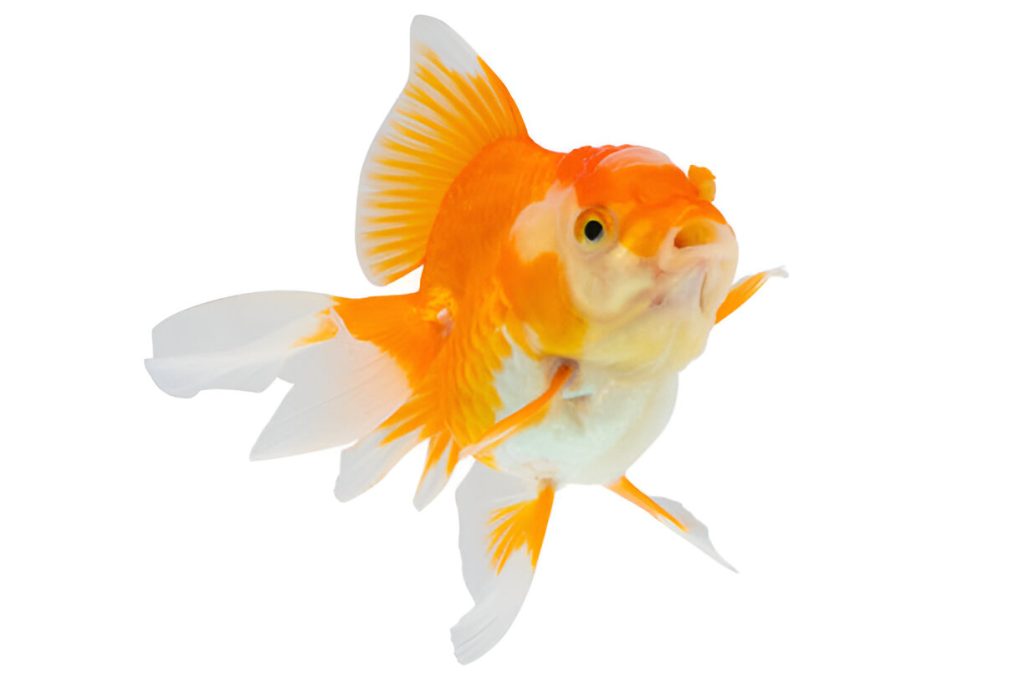
Oranda goldfish showcase human-influenced forehead development. Their distinctive “wen” grows throughout their lifetime.
Selective breeding created these ornamental features. Breeders prize verandas with the largest, most symmetrical wens.
While beautiful, oversized wens can impair vision or swimming. Proper care prevents infections and maintains fish health.
Their round faces and friendly personalities make them popular aquarium pets. Orandas demonstrates how humans shape animal features.
Green Humphead Parrotfish – The Coral Crusher
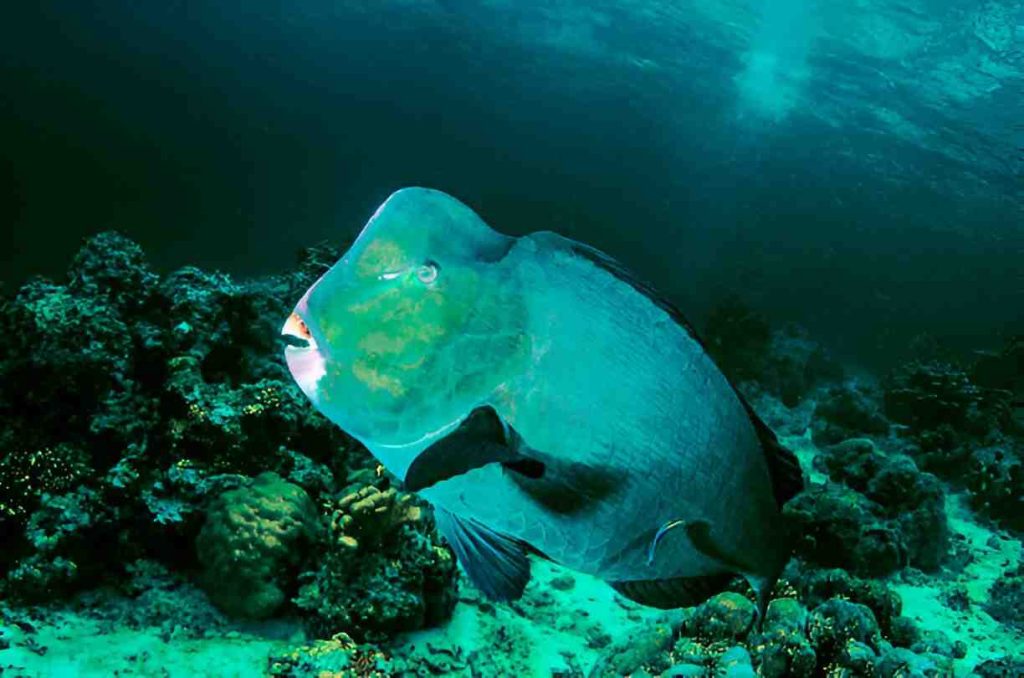
Green humphead parrotfish develop pronounced forehead bumps with age. These bony structures help with species recognition and mating displays.
Their powerful heads ram into coral reefs during feeding. Strong jaws and grinding plates process coral efficiently.
These fish create sand through their feeding habits. A single humphead parrotfish produces hundreds of pounds of sand annually.
Their essential role in reef ecosystems makes them valuable conservation targets. Big foreheads help maintain coral health.
Evolutionary Advantages of Big Foreheads
Large foreheads evolve for specific survival advantages. Echolocation organs help marine mammals navigate and hunt underwater.
Muscle attachment points enable powerful jaw functions. Social communication features facilitate group interactions and mating success.
Thermoregulation capabilities help animals adapt to temperature extremes. Fat storage provides energy reserves during harsh conditions.
Each species develops forehead features suited to its environment and lifestyle. These adaptations demonstrate evolution’s problem-solving creativity.
Conservation Considerations
Many animals with distinctive foreheads face conservation challenges. Habitat loss threatens pandas, gorillas, and marine mammals.
Climate change affects Arctic species like belugas and polar ecosystems. Ocean pollution impacts dolphin and whale populations.
Conservation efforts focus on protecting natural habitats and reducing human interference. Education helps people appreciate these unique animals.
Understanding facial adaptations builds an appreciation for biodiversity. These remarkable features deserve protection for future generations.
Final Words
Animals with big foreheads and round faces showcase nature’s incredible diversity and adaptability. From giant pandas crushing bamboo to sperm whales diving deep, each species uses their distinctive features for survival.
These facial characteristics aren’t just cute – they’re evolutionary masterpieces. Whether for echolocation, muscle attachment, or social communication, big foreheads serve vital functions.
Next time you see an animal with unusual facial features, remember the fascinating science behind their appearance.
These adaptations represent millions of years of evolutionary refinement, proving that in nature, form truly follows function.
People also ask
Do large foreheads always indicate higher intelligence in animals?
Not necessarily. While some intelligent animals have large foreheads, these features often serve other purposes, like muscle attachment or organ housing.
Which marine animals use their foreheads for echolocation?
Beluga whales, bottlenose dolphins, and sperm whales all have specialized melon organs in their foreheads for echolocation.
Are oranda goldfish healthy with such large head growths?
Orandas can be healthy, but their wens require special care to prevent infections and vision problems.
How do elephants use their large foreheads?
Elephants use their foreheads for muscle attachment, weight distribution, social displays, and tactile sensing.
Do all animals with big foreheads use them for communication?
No. While some use foreheads for sound production or visual displays, others use them for physical tasks like digging or fighting.

